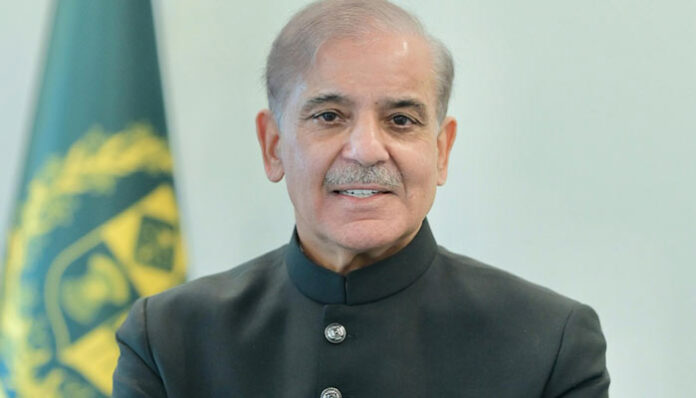Shehbaz Sharif, one of the most prominent names in Pakistani politics, was born on September 23, 1951, in Lahore. A businessman turned politician, he became the second member of his family to lead the country as prime minister, first in 2022, and then again from 2024. His political journey started in the late 1980s, while his elder brother, Nawaz Sharif, was already rising to power in Punjab. Nawaz went on to serve as prime minister three times, and over the years, Shehbaz built his strong reputation. He served as Punjab’s chief minister for a full decade, and in 2017, after Nawaz was disqualified by the Supreme Court, Shehbaz stepped up to lead the Pakistan Muslim League–Nawaz (PML-N), fully stepping into the national spotlight.
His Childhood, School Life, and Personal Side
Born in 1951, Shehbaz Sharif’s early years were deeply influenced by his family’s journey from Amritsar to Lahore during the 1947 partition. With roots in Kashmir and Punjab, his family left behind their past and embraced a fresh start. His father, Muhammad Sharif, began by building a steel factory on the outskirts of Lahore, which eventually grew into the thriving Ittefaq Group in the 1960s.
Shehbaz Sharif, a prominent Pakistani politician and businessman, completed his education at St. Anthony’s High School and Government College University in the 1970s. After joining the family’s business, Ittefaq Group, he faced setbacks when President Zulfikar Ali Bhutto nationalized the company in 1972. However, after General Zia-ul-Haq’s rise to power in 1977, the company was returned to the family. Gaining experience in business and politics, Shehbaz became president of the Lahore Chamber of Commerce & Industry in 1985.
Shehbaz Sharif, a key figure in Pakistani politics, followed in the footsteps of his family to help build their political dynasty. His elder brother, Nawaz Sharif, rose to prominence as Punjab’s finance minister in 1981. Their younger brother, Abbas Sharif, also ventured into politics, briefly serving in the National Assembly from 1993 to 1997 before his untimely passing in 2013. Nawaz Sharif went on to become Pakistan’s prime minister three times, while his daughter, Maryam Nawaz, has also become a prominent political leader in Pakistan.
Shehbaz Sharif, with his first wife, Nusrat, had four children. Their eldest son, Hamza Shahbaz Sharif, followed in his father’s footsteps and served in the National Assembly for a decade, from 2008 to 2018. In 2018, Hamza took charge as the leader of PML-N in Punjab and briefly held the position of chief minister in 2022. In 2003, Shehbaz married Tehmina Durrani, making her his second wife, as allowed by Pakistani law.
The Beginning of Shehbaz Sharif’s Political Journey
In 1988, Shehbaz Sharif entered politics after the death of General Zia-ul-Haq and Pakistan’s first general elections in years. He won a seat in the Provincial Assembly of Punjab and later joined the National Assembly in 1990. In 1993, he was reelected to both assemblies but chose to lead the opposition in the Provincial Assembly until 1996. In 1997, after the PML-N won the national elections, Shehbaz Sharif became the Chief Minister of Punjab.
Shehbaz Sharif’s political rise wasn’t without its struggles. After Zia-ul-Haq’s death, Pakistan faced a turbulent period, and the Sharif family was right in the middle of it. During these years. The country saw power constantly shifting between two political giants: Benazir Bhutto, head of the Pakistan People’s Party, and Nawaz Sharif. Their rivalry was fierce, with accusations of corruption flying from both sides. But the real challenge for them both was the military’s strong influence, which kept meddling in civilian politics. As a result, the governments between 1988 and 1996 were unstable, falling apart under constant military pressure.
In 1997, Nawaz Sharif’s landslide election victory gave him unprecedented power, allowing him to push rivals aside, including sending Benazir Bhutto into exile. However, rising tensions from ethnic violence, nuclear tests, and the Kargil War strained his relationship with the military. Shehbaz Sharif stepped in as a mediator during this crisis. In 1999, Nawaz attempted to remove General Pervez Musharraf, leading to a military coup. The Sharif brothers were ousted, and Shehbaz was later acquitted of hijacking charges. In 2000, he went into exile in Saudi Arabia as part of an agreement for his brother’s release.
Shehbaz Sharif: Transforming Punjab as Chief Minister from 2008 to 2018
In 2007, they returned to Pakistan ahead of the 2008 elections. Benazir Bhutto also came back, but tragically, she was assassinated in December due to a security lapse. Her death led to protests against Musharraf’s government. After the elections, Bhutto’s PPP, led by her husband Asif Ali Zardari, and the Sharif family’s PML-N teamed up to challenge Musharraf. Facing impeachment, Musharraf resigned in 2008.
After winning the 2008 elections, Shehbaz Sharif became the Chief Minister of Punjab again. He worked on improving infrastructure, education, and fighting corruption. In his second term (2013), he launched Lahore’s Orange Line Metro, Pakistan’s first metro system, with help from China’s CPEC project. Despite his achievements, many felt he didn’t focus enough on healthcare and agriculture.
After serving as Chief Minister of Punjab, Shehbaz Sharif became the leader of the opposition in 2018. He focused on holding the government accountable, pushing for economic reforms, and advocating for better governance. Despite challenges, he remained a key figure in Pakistan’s political scene, committed to fighting for the people’s interests.
Shehbaz Sharif’s Impactful Leadership as Opposition Leader (2018–2022)
In 2015, the Panama Papers linked Nawaz Sharif and his children to a corruption scandal. While Shehbaz was not directly involved, he testified in the 2017 Supreme Court investigation. After Nawaz’s disqualification, he went to London for his wife’s treatment, and Shehbaz took over PML-N. However, in the 2018 elections, PTI led by Imran Khan won, and Shehbaz became the leader of the opposition.
In September 2020, amidst Pakistan’s economic struggles, Shehbaz Sharif formed the Pakistan Democratic Movement (PDM), a historic alliance with the PPP and other opposition parties. This coalition aimed to challenge the government and push for change. Shortly after, Shehbaz was arrested on money laundering charges and spent six months in detention before being granted bail. Once freed, he resumed his role as leader of the opposition, continuing his efforts to improve Pakistan’s future.
“Pakistan’s Prime Minister During 2022–2023”
PDM struggled for months but could not remove Imran Khan until 2022. By then, Khan’s relations with the military had worsened, and he upset the U.S. by criticizing them and getting closer to Russia during the Ukraine crisis. Although he helped in the U.S. withdrawal from Afghanistan, his soft corner for the Taliban upset both the U.S. and Pakistan’s army. In April 2022, with support from his party members, Khan was ousted through a no-confidence vote, and Sharif became prime minister.
Sharif’s early months were full of challenges. The economy kept falling, and the devastating monsoon floods killed around 1,700 people, displaced millions, and submerged one-third of Pakistan under water.
In July 2022, PTI made a powerful comeback during the Punjab elections. Winning 15 out of 20 seats, they turned the tide against Hamza Shahbaz Sharif, who had been serving as Punjab’s chief minister. Riding on this major victory, PTI quickly moved to replace him and appointed their chief minister before the month ended, marking a big shift in Punjab’s political scene.
By the end of 2022, Shehbaz Sharif faced a new wave of challenges from the Tehreek-e-Taliban Pakistan (TTP). Intensified attacks on Pakistan’s security forces in Khyber Pakhtunkhwa. The TTP, which opposes the presence of Pakistan’s military in the region, ended its ceasefire in November. After failed peace talks with the government. In January 2023, the situation took a tragic turn when a suicide bombing at a police compound in Peshawar killed more than 100 people. It was a difficult time for Pakistan, as the country struggled to deal with increasing violence and instability.
Shehbaz Sharif Leads Coalition After Elections Fail to Produce a Clear Winner
While the TTP’s attacks had been less frequent in the province, something far worse happened in July. A suicide bombing by ISIS-K (Islamic State–Khorasan Province) rocked a political rally, killing over 60 innocent people. This shocking tragedy made it painfully clear to many Pakistanis. The deadly conflict between ISIS-K and the Afghan Taliban. They had spilled over into northwestern Pakistan, leaving everyone deeply concerned about the rising violence and growing instability in the region.
In May 2023, the political alliance between Sharif’s PML-N and Zardari’s PPP strengthened due to growing pressure on Khan and his PTI. Khan was arrested on corruption charges, sparking protests from his supporters. Many saw the arrest as politically motivated. In August, Khan was convicted and sentenced to prison, marking a major setback for PTI and Pakistan’s political scene.
As August neared its end, Sharif unexpectedly resigned three days early. Handing over control to a caretaker government and delaying elections beyond the original October date. Although Sharif was expected to keep his seat, his real goal was to bring his brother, Nawaz Sharif, back as prime minister. When the election results failed to give a clear winner, Shehbaz Sharif led a coalition with the PPP.

